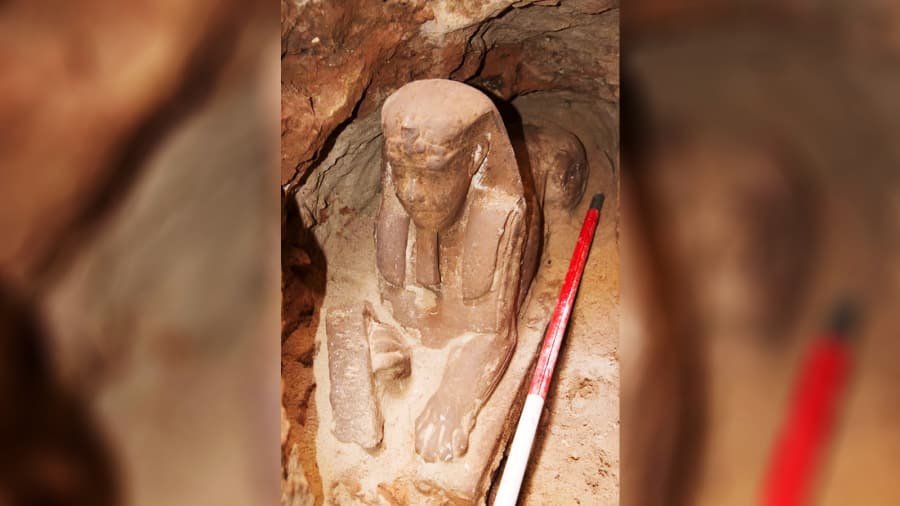(CNN) — Some amazing archeological finds involve daring adventures into hidden tombs. Others — as is the case with the discovery of a beautiful new sphinx in Egypt — simply involve a spot of drainage.
The newly uncovered sandstone statue, believed to be more than 2,000 years old, was revealed during work to lower the groundwater level in an ancient temple.
Egypt’s Ministry of Antiquities said on its Facebook page that the sphinx was found on the southeastern side of the Kom Ombo temple near the southern city of Aswan.
Images released by the ministry show a classic sphinx, with the body of lion and the head of a human, wearing a snake crown and headdress. The statue appears to be mostly intact.
Mostafa Waziri, general secretary of Egypt’s Supreme Council of Antiquities, says the statue dates from the Ptolemaic era which ran from 300 BC to 30 BC. He said it was found close to the location where two sandstone reliefs of King Ptolemy V were recovered two months earlier.
More excavations are expected to take place around the temple to try to learn more about the sphinx, Abdel Moneim Saeed, general director of Aswan Antiquities, said, according to the ministry.
Sphinxes are recurring creatures in the mythologies of ancient Egyptian, Persian and Greek cultures. Their likeness are often found near tombs or religious buildings.
Crocodile mummies
The most famous, the Great Sphinx of Giza, is believed to have been built next to the Nile river in about 2500 BC for the pharaoh Khafra, who also ordered construction of one of the pyramids of Giza.
While the Great Sphinx is an imposing 73 meters (240 feet) long and more than 20 meters high, the latest discovery at Kom Ombo is reported to be a mere 38 centimeters high.
Kom Ombo is considered unusual for an ancient Egyptian temple because it is dedicated to two separate deities — crocodile god Sobek and falcon god Haroeris.
Three hundred crocodile mummies discovered near the temple are displayed in an adjacent Crocodile Museum.
Highlighting the fact that Egypt still has mysteries yet to uncover, the sphinx may help draw more visitors back to a country whose recent social and political upheavals led to a sharp decline in tourism.
The latest discovery follows the recent opening of the newly restored Tomb of Mehu, a 4,000-year-old burial site near Giza that has been hidden from public view since its discovery 80 years ago.
Also, near Aswan, another archeological excavation uncovered a sandstone coffin containing mummified human remains. The coffin, bearing hieroglyphics, was found in a site close to the banks of the Nile.
The-CNN-Wire™ & © 2024 Cable News Network, Inc., a Time Warner Company. All rights reserved.

